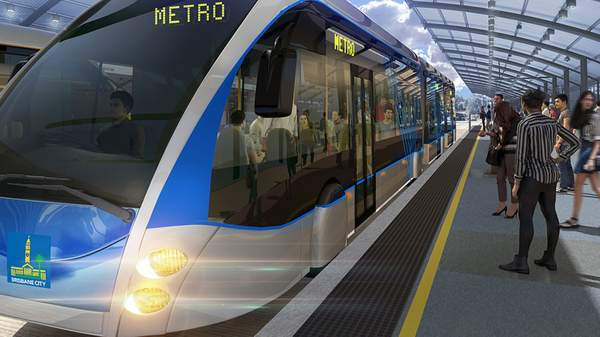Overview
Catching public transport in Brisbane can be a soul-crushing experience. Fewer services, expensive fares, buses and trains that don't show up at all, changing routes, ridiculous traffic, constant track work: if you're a regular bus or train commuter, you'll be acquainted with all of the above. Oh yes you will.
Early in 2016, the Brisbane City Council announced a possible solution, or a step in the right direction at least. Almost five decades after the city's trams were ripped out back in 1969 (yes, that's why we have a museum dedicated to them), light rail is back on the agenda — and now the powers that be have released more details.
The Brisbane Metro concept now involves not one but two high-frequency lines linking existing busway stations, with the first running between Eight Mile Plains and Roma Street to take care of southern residents, and the second linking the Royal Brisbane and Women's Hospital to the University of Queensland. In total, 21 kilometres will be traversed by a fleet of approximately 60 trackless, rubber-tyred vehicles capable of carrying up to 150 people. Services will run as frequently as every three minutes in peak periods, stopping at 18 stations, and will link in with the State Government's proposed 10.2-kilometre Dutton Park to Bowen Hills Cross River Rail project at Boggo Road and Roma Street.
As part of the plan, a new underground Metro station will be built at South Bank at the Cultural Centre, and the adjacent Victoria Bridge will be turned green. That means cars will need to find another route into the city, with the stretch of road dedicated to buses and Metro services only.
Don't go changing the words of The Simpsons' monorail song to "light rail" just yet — we still have a few years to wait, with the new system expected to begin construction in 2018 for a 2022 finish. And, we can probably reasonably expect more than a few delays and inconveniences during that tie. But hey, if the project really does improve the public transport situation in Brisbane, it'll be worth it.
